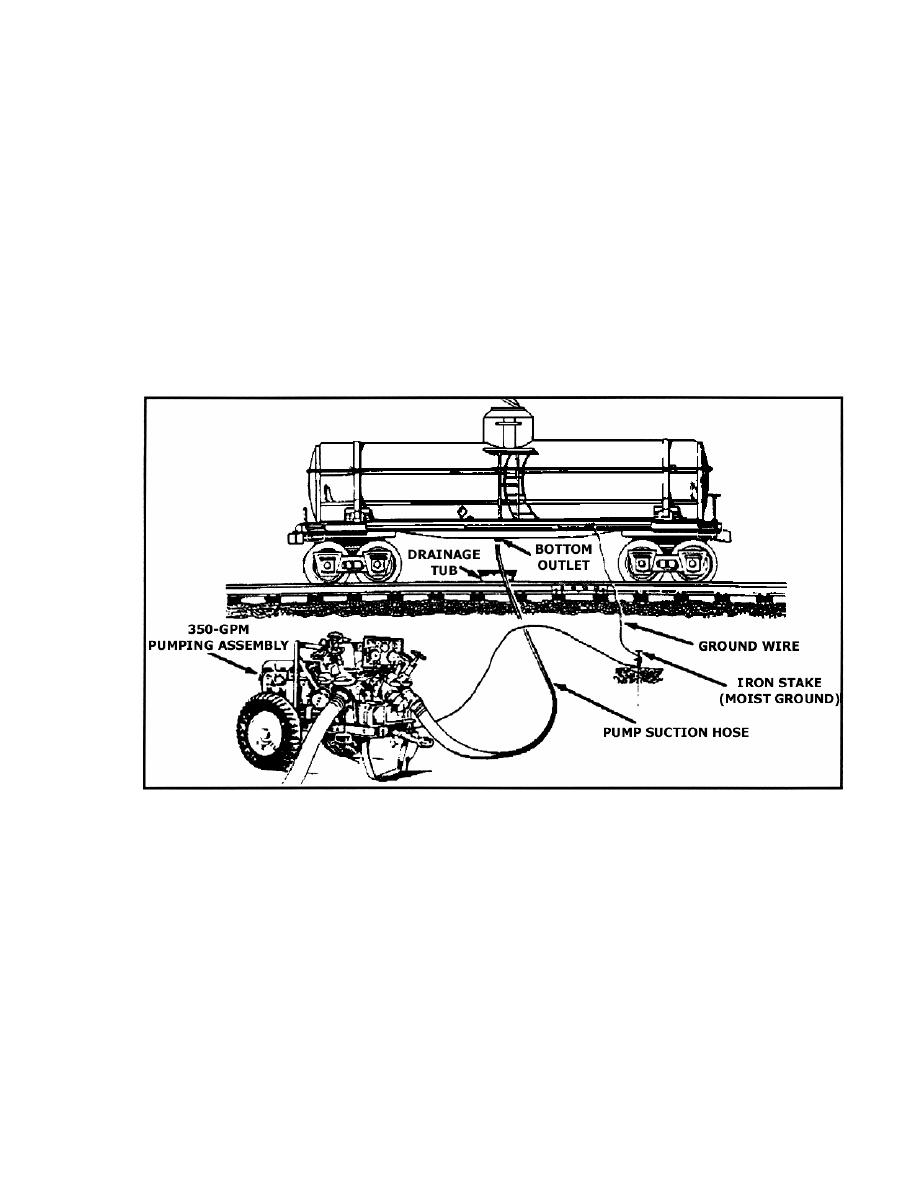
Loading Product. Tank cars should be loaded through the bottom outlet (Figure 9-1) whenever possible
to prevent vapor loss, reduce the generation of static electricity, and protect the fuel against contamination
from outside sources. To bottom load a tank car proceed as follows. Locate and ground a pumping
assembly at least 50 feet away from the tank car. Make sure that the supply container is properly grounded
and vented. Connect the hose lines and take care to prevent hose connections from lying on the ground or
from becoming otherwise contaminated. Station a man on the windward side of the dome to signal when the
full mark is reached. Before starting the pump, open the appropriate valves to avoid pumping against a
closed system. Start the pump and observe safety precautions. When the transfer operation is halted for
any reason, disconnect the pump discharge hose. When the level of product in the tank car is near the full
mark of the bench mark, signal the pump operator to reduce the pump speed and be alert to stop the pump.
When using a loading rack or other system that provides a control valve, reduce the flow of product into the
tank by partially closing the valve. If the tank does not have a full mark, load the tank until the product
reaches the top of the shell. When the product reaches the full mark or top of shell shut down the pump,
close all valves, and disconnect the pump discharge hose.
Figure 9-1. Loading from the bottom.
Top Loading. Top loading is done only in emergency situations when bottom loading is not possible and
is accomplished by inserting the end of the loading hose or drop tube through the dome of the tank until it
almost touches the bottom of the tank (Figure 9-2). If the hose or drop tube does not extend far enough into
the tank, the product splashes, causes undue loss of product through vaporization, and creates a potential
fire hazard. Make sure that there is no unnecessary strain on the hose, which could cause the hose to move
or come out of the tank during the transfer. Before starting the pump, open the appropriate valves to avoid
pumping against a closed system. When all connections are secure and the necessary valves are open,
start the pump. When product starts to flow into the tank, observe the bottom outlet to see if there is any
leakage. If leakage is apparent, stop the pump and attempt to seat the bottom outlet valve by turning the
valve rod handle in a clockwise direction. If the leak cannot be stopped, discontinue loading operations,
recover product from the tank, and clear the area of spilled product. Follow safety precautions as given for
bottom loading above.
9-4
QM 5094



 Previous Page
Previous Page
